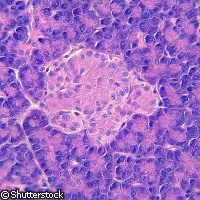New sensor sheds light on zinc biology
EU-funded researchers have developed a sensor that allows them to measure the concentration of zinc inside cells. The findings should lead to a greater understanding of diseases in which zinc has been implicated, such as diabetes and Alzheimer's. The study, by scientists in the Netherlands and the UK, is published online by the journal Nature Methods. EU support for the work came from the SAVEBETA ('Molecular pathways underlying decreased beta cell mass in diabetes mellitus') project, which is funded under the 'Life sciences, genomics and biotechnology for health' Thematic area of the Sixth Framework Programme (FP6). Zinc is involved in many processes of the human body, including the transmission of nerve signals. Around 5% of all the proteins made by the body are involved in transporting zinc. At the same time, zinc appears to play a role in a number of diseases, including type 2 diabetes. High levels of zinc are also known to be toxic, yet little is known about how the body maintains the correct levels of zinc in its cells. 'There has been relatively little biological work done on zinc compared to other metals such as calcium and sodium, partly because we didn't have the tools to measure it accurately before now,' commented Professor Guy Rutter of the Division of Medicine at Imperial College London in the UK. 'Zinc is so important in the body - studies have suggested it has roles in many different areas, including muscles and the brain.' Current sensors used to measure zinc levels in cells are often inaccurate, fail to detect the lowest concentrations of zinc, and are unable to determine differences in zinc levels in different parts of the cell. In this study, the researchers demonstrate a new device called a fluorescence resonance energy transfer (FRET) sensor. The sensor consists of two jellyfish proteins: one cyan and one yellow. The team constructed the protein in such a way that light taken up by the cyan protein is transferred to the yellow protein which gives off yellow light. When a zinc ion attaches to the sensor, the fluorescent proteins are pushed apart and the transmission of light between them becomes weaker. The scientists used a fluorescence microscope to detect the wavelengths of light emitted by the proteins. This allowed the scientists to determine where higher levels of zinc could be found in the cell. The team tested their new device on pancreatic beta cells. Insulin is made in these cells, and zinc is known to be involved in packaging insulin. The gene that controls this packaging process is often defective in people with type 2 diabetes. The new tool revealed much higher levels of zinc in the granules in the cellular structures where insulin is found. 'It was beautiful to see that the cell concentration of zinc is accurately maintained at around 400 picomol per litre. Too high concentrations of zinc are very toxic for the cell, but at the same time zinc is an essential metal ion for many enzymes and all kinds of other processes in the cell,' said Maarten Merkx of Eindhoven University of Technology in the Netherlands. The scientists now plan to develop their sensor further to investigate zinc in a living mouse model, so that they can see how zinc moves in different tissues. 'We can now measure very accurately the concentration of zinc in cells and we can also look at where it is inside the cell, using our molecular measuring device,' stated Professor Rutter. 'This sort of information will help us to see what is going on inside different tissues, for example in the brain in Alzheimer's disease, where we also suspect zinc may be involved. We hope this new sensor will help researchers learn more about zinc-related diseases and potentially identify new ways of treating them.'
Countries
Netherlands, United Kingdom



